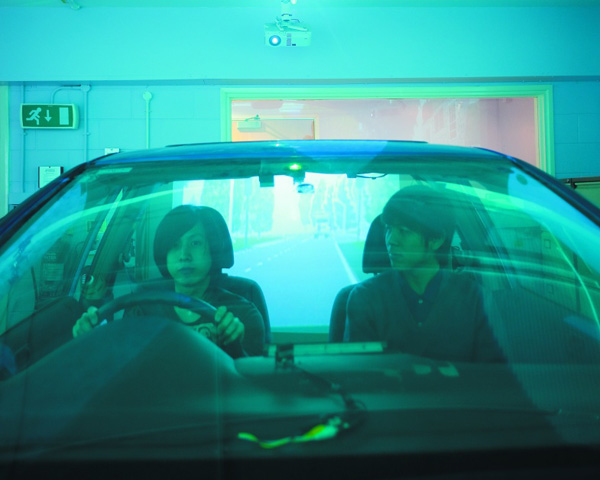
August 21, 2012, by Tara de Cozar
Being a lab rat – driving simulator
I’ve worked for the University for six years now. One of the things I like most about the job is getting access to cool stuff. I get to hear a lot of the calls for volunteers that researchers put out, looking for guinea pigs to help prove, or disprove, their latest theory. I’ve been in an MRI scanner a few times — most notably while pregnant. And, as documented here, I’ve recently learned that tears of listening to loud music may have had a detrimental impact on my hearing. It’s all good fun, and sometimes you get pictures of what your brain — or your uterus — looks like. If you work at or close to a University, look into the volunteering opportunities. It usually doesn’t take long, and sometimes you get paid!
Anyway, enough rambling. On Friday I went along to the Innovative Technology Research Centre to take part in a Human Factors Research Group study on the University’s driving simulator. I’d seen pictures of this before, but have never been in it. The study I took part in compares two different driving simulators — one desktop and one that involves getting in an adapted car. I did test drives on both before we started, which was a good thing, as I’d have crashed straight off and my data would’ve been useless. With my usual eloquence I can say that driving simulators are very like driving a real car, while not. The simulator which involves getting in the car is particularly effective in getting you to believe the simulated environment. I put my seatbelt on in this one, as it would have felt weird doing the test without it — even though I wasn’t moving.
I can’t say too much about the tests, as I’m hoping a few people will sign up to do it after reading this and I don’t want to influence the results. In terms of the experience though, this is well worth doing. The difference between the two simulators was interesting. One felt a bit like playing a computer game, one was more immersive. The ‘unseen’ elements of both simulators, which made the drive more realistic, were really impressive. And it’s amazing how anxious I felt about crashing the car, despite being fully aware of being in a safe environment. Even with the boxy graphics and lack of movement, I really didn’t want to experience the sensation of going headlong into a truck at 50 mph…
If you’d like to be a research subject for this study, contact Richard Donkor in the Human Factors Research Group in the Faculty of Engineering. You’ll need to go across to the ITRC to do the study, and it will take between 30 and 60 mins to complete. You’ll do test drives, have your temperature and heart rate monitored, and fill in a variety of questionnaires at each point in the test. The study isn’t suitable for people who have certain health problems, or who are pregnant. Have a word with Richard beforehand to make sure you’re clear.
One point I will make though… The team advise that you don’t drive for an hour to 90mins after completing the study. I’d heartily recommend that you stick to this, and plan your study time accordingly. I drove about 15 mins after finishing and felt very peculiar, despite not experiencing any motion sickness during the test itself. Give yourself time to recover.
And let me know if you do it. Would be good to compare experiences.
No comments yet, fill out a comment to be the first

Leave a Reply